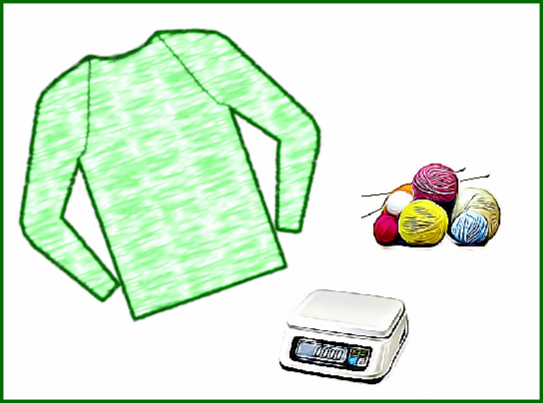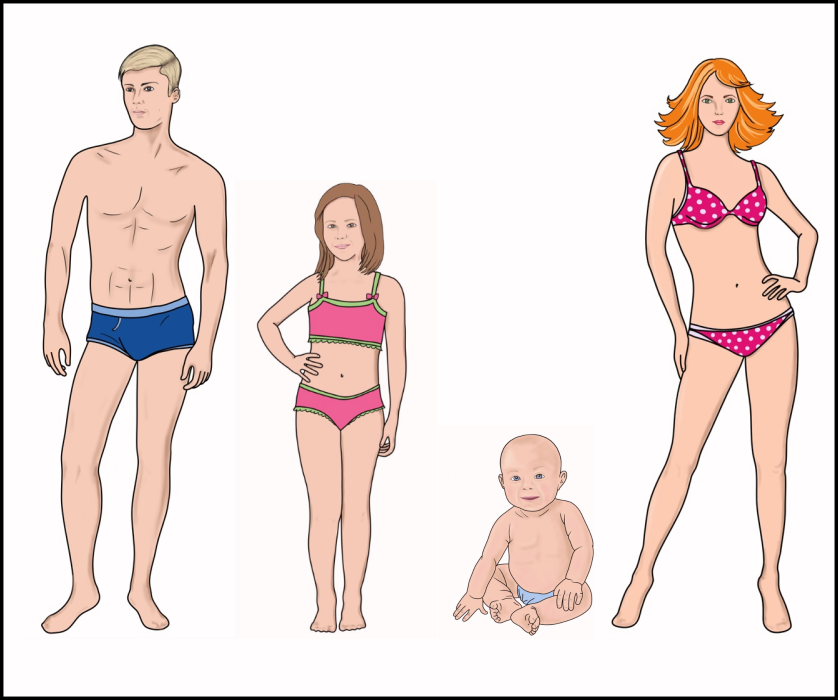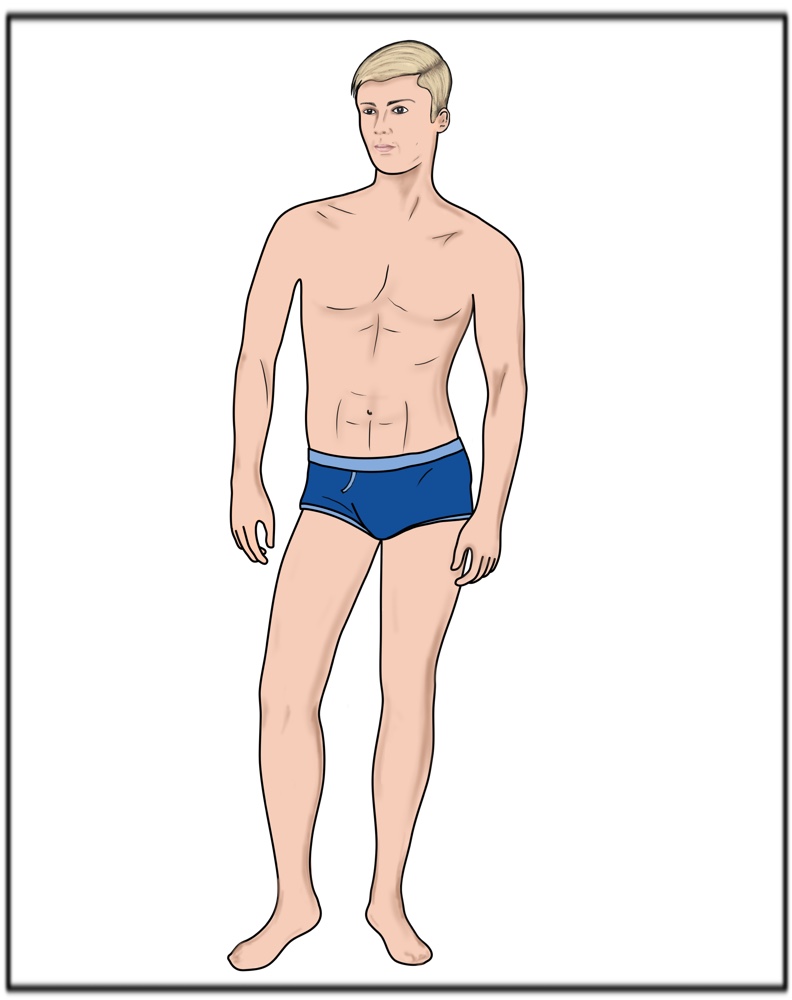
Determining knitting gauge properly is an essential stage before you start knitting any garment.
Why is it so important to determine knitting gauge? Because it is what the preconditions whether of the size of the finished garment that will need to correct.
With the wide range of available yarn and tools, you can never foresee the knitting gauge in advance. Although most yarn sold in skeins has an indication of recommended tools and expected gauge of knitting, it is not always possible to obtain the same gauge. These things are accounted for by the fact that each person knits with their own yarn tension and in their own manner. The recommendations on labels refer to the stockinette stitch pattern only. If any other pattern is to be used, it can differ significantly from stockinette stitch pattern knitting in its gauge.
Here is a simple example to illustrate the above. You have decided to knit a sweater. The knitting gauge indicated on the label is 20 stitches per 10 cm – 4 in (2st/cm or 5 st/in). If the hip circumference is 100 cm (40 in), you will need to cast on 200 stitches in order to start knitting in circle. Let us assume that your true gauge is 22 stitches per 10 cm (4 in) (2.2.st/cm – 5.5. st/in) but you have cast on the same 200 stitches without measuring the true gauge as you trust the data provided on the label. Then, you will actually get only 200/2.2=90.9 cm or 200/5.5=36.36 in. instead of 100 cm. The discrepancy is obvious and the sweater will be too small or too tight.
Below we describe how to determine knitting gauge correctly.
Knitting gauge can be:
- Horizontal (hg) which determines the number of stitches in 1 cm/inch. Horizontal gauge allows for the determining of any horizontal sizes of a garment or its elements in stitches.
- Vertical (vg) which determines the number of rows in 1 cm/inch. Vertical gauge allows for the determining of any vertical sizes of a garment or its elements in rows.
You can calculate knitting gauge by knitting a swatch.
A swatch is a knitted rectangular/ square not less than 10 cm in width and 10 cm in length. The bigger the swatch, the more accurate calculations you will need to obtain. It has to be made of the same yarn, using the same tool and with the same pattern which are to be applied for the garment. If a few patterns are to be used, the same number of swatches should be made. It is recommended that welts be made at the edges of the swatch in several rows and stitches in garter stitch pattern (as shown in the figures). Some patterns can twist heavily during knitting and the garter stitch pattern will fix the swatch for the pattern to be seen clearly.
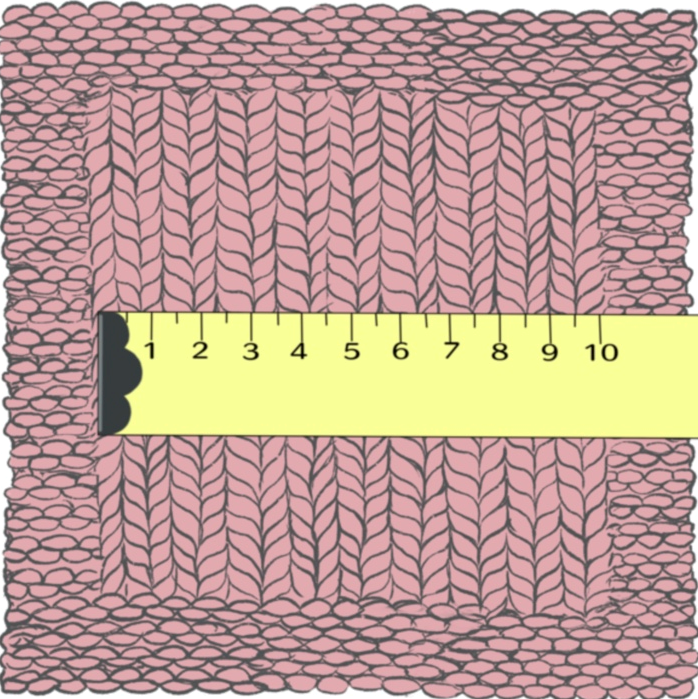
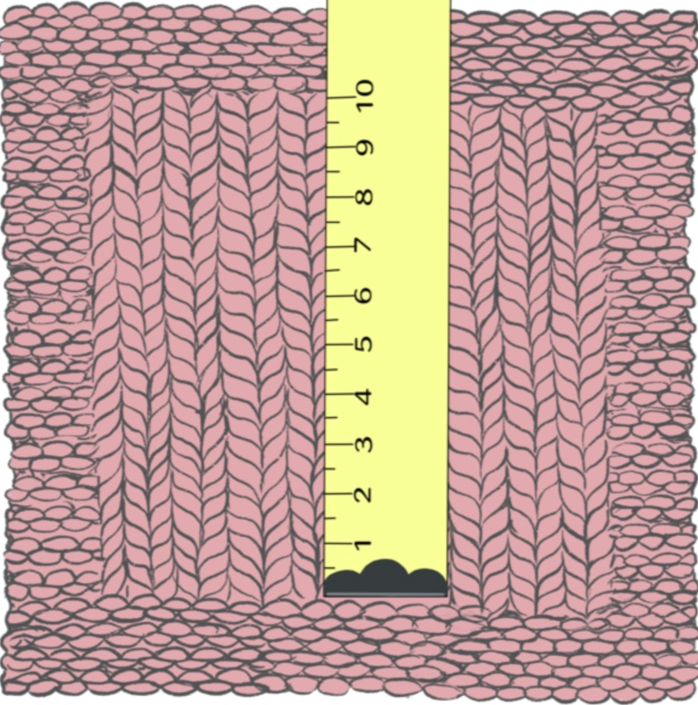
After a swatch is made, it should undergo wet and steam blocking (WSB) in accordance with the recommendations provided on the yarn label. WSB is indispensable because the behavior of different yarn can vary after washing, drying and other stages of WSB. More information about WSB is provided HERE.
After this procedure, measurements and calculations are performed:
- Write down the number of stitches in the pattern (Nst). Use a ruler to measure the width of the pattern stitches considering tenths of cm/in (W). Try to make measurements in the central part of the swatch height-wise. If the swatch is big enough, make measurements in several places (height-wise) and take the mean value of W. ATTENTION: Do not take measurements too close to the top or bottom of the swatch as it is where it is deformed most of all and it can lead to erroneous results.
- Write down the number of rows (Nr). Use a ruler to measure the height of the rows considering tenths of cm/in (H). Try to make measurements in the central part of the swatch width-wise and take the mean value. ATTENTION: Do not take measurements too close to the right or left part of the swatch as it is where it is deformed most of all and it can lead to erroneous results.
The horizontal knitting gauge will be equal to (st/cm or st/cm): hg=Nst/W
The vertical knitting gauge will be equal to (row/cm or row/in): vg=Nr/H
Be sure to write down the data obtained. Below is the formula we suggest:
- Garment (provide a brief description of the garment you are going to knit)
- Yarn
- Tool and its size
- Pattern
- Swatch width – W
- Number of stitches in the swatch - Nst
- Swatch height – H
- Number of rows in the swatch - Nr
- Horizontal knitting gauge – hg
- Vertical knitting gauge – vg
We also recommend that you weigh the swatch (if you have kitchen scales) and write down its weight (m). This information will help you calculate the amount of yarn required for the garment.
Later, you will be able to calculate the number of stitches/rows in any place of the garment/pattern using the gauge values you have obtained. For example, the width of a jumper front is 50 cm (20 in), the height is 60 cm (24 in), hg=2 st/cm (5 st/in), vg=3 row/cm (7.5 row/in). You have to cast on: 50*2=100 stitches and knit 60*3=180 rows or in inches: 20*5=100 stitches 24*7.5=180 rows.
Our website offers a convenient catalog to store information about your swatches ("My Swatches"). You can use it to find the swatch you need, add a photo, a pattern, etc. The catalog is in your personal area. You can use the information from the catalog for calculations or descriptions or in order to determine the required amount of yarn.
More information about how to use the catalog can be found HERE.
